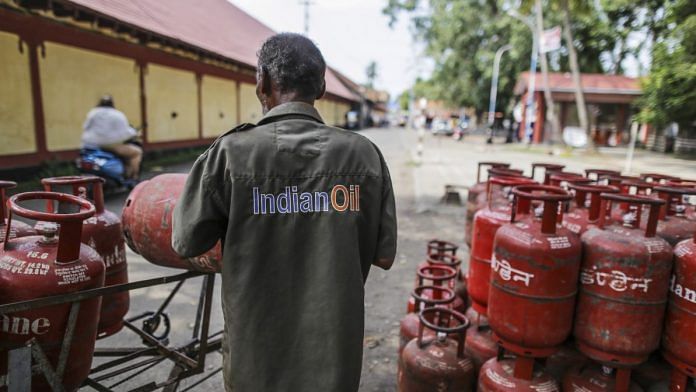The high domestic LPG cylinder price is an additional burden on the urban slum households, a demographic already facing challenges with regard to clean cooking energy access. While the government’s flagship Pradhan Mantri Ujjwala Yojana or PMUY has played an instrumental role in increasing LPG reach, the poor living in India’s urban slums need targeted support for the fuel’s adoption and use. India has more than 13.7 million urban slum households. Slum-dwellers suffer from the twin burden of high urban ambient particulate matter pollution and household air pollution.
A recent survey by CEEW-ISEP spanning across 58 non-metropolitan districts of six Indian states – Bihar, Chhattisgarh, Jharkhand, Madhya Pradesh, Rajasthan, and Uttar Pradesh – suggests a significant improvement in LPG use across slum households over the past decade. Almost 86 per cent now have LPG connections and as many as 55 per cent use LPG as exclusive cooking fuel. However, what this also means is that nearly half of the urban slum population across the six states, representing a quarter of India’s slum population, still relies on polluting fuels for cooking, either entirely or partially, through fuel stacking with LPG. Based on our research, we suggest five strategies to reduce household air pollution, and transition the households using polluting fuels to the exclusive use of LPG: include poor households in urban slums, target vulnerable slum households, extend home delivery of LPG cylinders to all urban slum households, integrate LPG delivery with social assistance programmes focused on urban poverty, and focus on cooking and non-cooking uses of biomass in urban slums.
Extend Ujjwala, target slums
The first step is to insure that the extension of the Ujjwala scheme in Budget 2021 to an additional 10 million beneficiaries involves a targeted effort to include poor households in urban slums. About 12 per cent of the slum households in the six surveyed states were without LPG connections.
Second, since less than a quarter of slum households were Ujjwala beneficiaries and interventions using targeted subsidies like the PM-Garib Kalyan Yojana would inadvertently miss these households, there is a need to target vulnerable slum households beyond PMUY beneficiaries for differential support to ensure sustained use of LPG, despite the economic hardship imposed by Covid-19.
Third, the home delivery of LPG cylinders must be extended to all urban slum households. In the six states, over a third of LPG users in slums did not have cylinders delivered at home, significantly impacting a household’s likelihood of exclusively using LPG. A lack of doorstep delivery leads to loss of wages as household members spend productive time in procuring the cylinder. Further, it has substantial gendered implications since it increases the dependence of women – the primary cooks – on male members to procure the cylinders. Hence, home delivery must be improved in the urban slums through better tracking, customer feedback, and linked performance incentives for LPG distributors.
Fourth, the support for the adoption and use of LPG should get integrated with social assistance programmes focused on urban poverty to expand its reach. Government programmes such as the National Urban Livelihoods Mission could be leveraged for improving LPG availability and creating sustained awareness about benefits of LPG use. Social service allocations for housing (PM Awas Yojana) or maternal health (PM Matru Vandana Yojana) could use existing targeting approaches to include access and sustained use of clean cooking energy within the ambit of services for the poor.
Also read: In Sikkim villages, this special ‘chulha’ from Nepal helps reduce firewood use, pollution
Clean air and LPG
The policies focusing on clean air need to account for cooking and non-cooking uses (water heating and space heating) of biomass to achieve safe air quality standards in urban areas, including slums. To focus on clean air, the government has committed Rs 2,217 crore for 42 urban centres with a million-plus population in Budget 2021. But, as per recent research, only 2 per cent of the action points in 42 city clean air plans, submitted under the National Clean Air Programme, mention cooking and heating as a sector to address air pollution. Focusing on cooking and non-cooking uses of biomass in urban slums is crucial since winter months (between November and February) record the highest concentration of PM2.5 in the six states, which coincides with a sharp increase in polluting fuel use.
In a rapidly urbanising India, the inadvertent exclusion of the urban poor from energy access discussions will have severe long-term implications on their health and economic development, especially in the ongoing pandemic. So, policymakers and practitioners in the energy and urban development sectors must be cognisant of the blind spot of access to clean cooking energy to the urban poor.
Jha is Research Analyst and Patnaik was former Programme Lead at the Council on Energy, Environment and Water (CEEW), an independent not-for-profit policy research institution. Views are personal.



